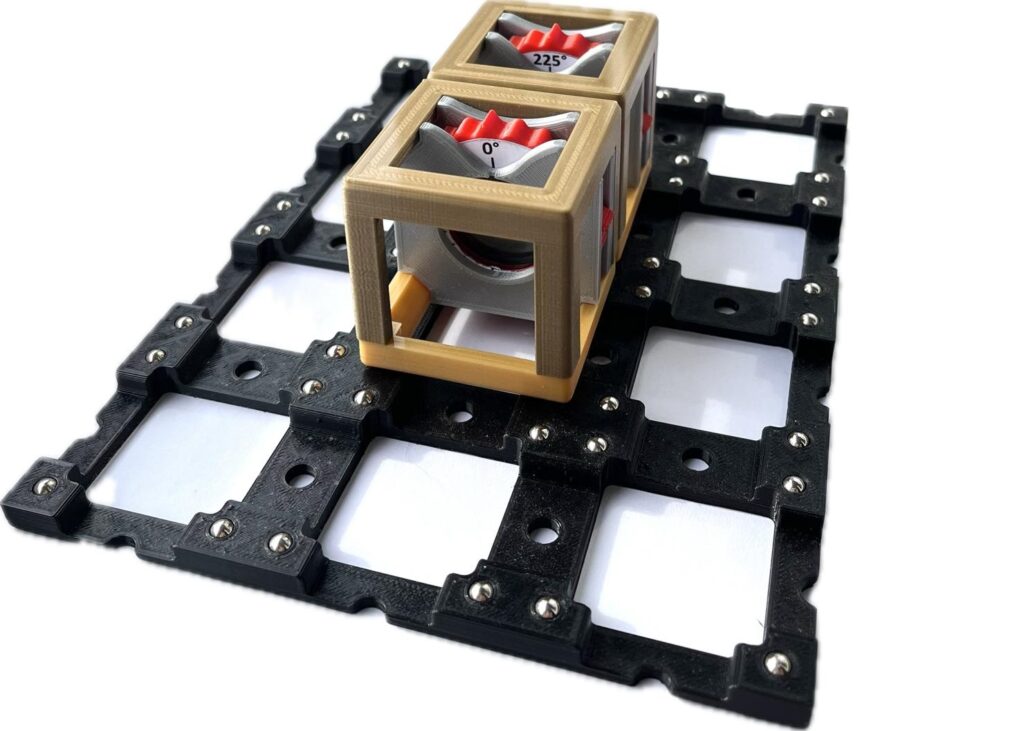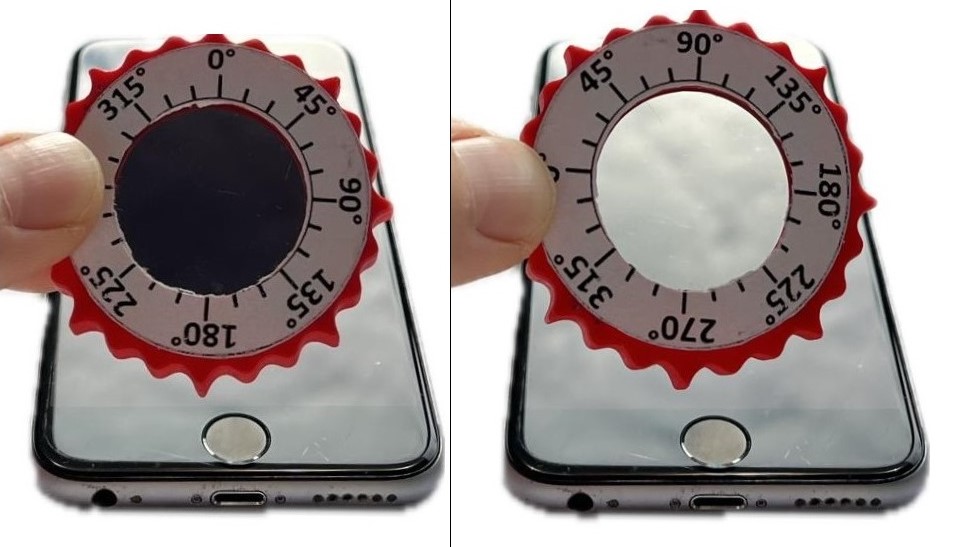
A rotary wheel is used in the polarizing filter module to hold a polarizing filter foil in alignment. The rotary wheel allows the polarization direction to be set. The polarizing filter can be used to investigate the polarization properties of light. For this purpose, the polarizing filter module can be combined with different light sources, for example. The combination with interferometers is particularly exciting, as this allows the model experiment on the quantum eraser to be realized, for example.
On this page you will find information on assembly, special features and possible experiments.
Assembly
Exploded View
Material:
- 1x 01A_Go_V*_cube_base 1×1
- 1x 02A_Br_V*_cube_cover 1×1
- 1x 14A_Re_V*_polarising_filter_cover
- 1x 14A_Re_V*_polarising_filter_wheel
- 1x 14A_Si_V*_polarising_filter_frontplate
- 1x 14A_Si_V*_polarising_filter_retaining_plate
- 1x 14A_Si_V*_polarising_filter_intermediate_plate
- 4x Allen cylinder head screw, M3x12
- Polarizing filter foil (30 mm x 30 mm)
- Polarizing filter scale (on adhesive label)
Tools:
- Allen key – 2,5 mm
- Scissors / knife
You will also find detailed instructions for assembly as well as a component and material list with the STL files for 3D printing and links to the relevant stores.
Special Features
Alignment of the polarizing filter foil
The correct alignment of the polarizing filter and the scale is difficult when assembling. The Brewster angle can be used for this purpose:

The orientation of the polarizing filter film can be determined using the Brewster angle, for example with a glass plate or the display of a smartphone. Hold the film in front of the reflected, polarized light. The orientation of the polarizing film is 0° when the reflected light is completely absorbed.
Filter cover
The filter cover is inserted into the corresponding opening after the polarizing filter and snaps into place to hold the polarizing filter firmly in place.
Intermediate Plate
The intermediate plate is used to reduce the friction between the wheel and the retaining plate. As the underside of 3D-printed components usually has a comparatively smooth surface, the intermediate plate is aligned with this smooth side towards the wheel in order to further minimize friction. This effect can also be optimized by using graphite (e.g. from a pencil) as a lubricant.
Experiments
- Quantum eraser – 5 pcs.
- Polarization of a laser diode – 1 pc.
- Law of Malus – 2 pcs.
- Rotate polarization with polarizing filters – at least 3 pcs.
